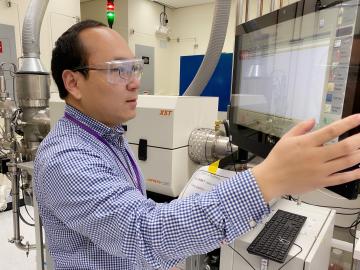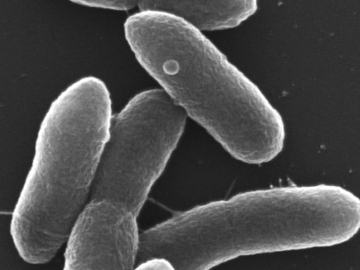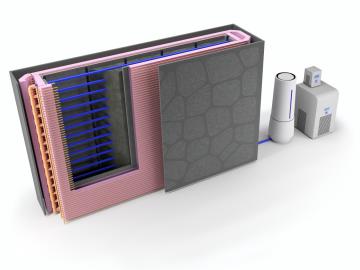
Filter News
Area of Research
- Advanced Manufacturing (10)
- Biology and Environment (13)
- Computational Engineering (1)
- Computer Science (9)
- Energy Science (76)
- Fusion and Fission (1)
- Fusion Energy (3)
- Materials (36)
- Materials for Computing (5)
- National Security (10)
- Neutron Science (19)
- Nuclear Science and Technology (5)
- Quantum information Science (6)
- Supercomputing (61)
- Transportation Systems (1)
News Topics
- (-) 3-D Printing/Advanced Manufacturing (43)
- (-) Big Data (18)
- (-) Biotechnology (3)
- (-) Computer Science (74)
- (-) Coronavirus (25)
- (-) Grid (12)
- (-) Machine Learning (13)
- (-) Microscopy (13)
- (-) Quantum Science (24)
- (-) Transportation (27)
- Advanced Reactors (21)
- Artificial Intelligence (20)
- Bioenergy (22)
- Biology (5)
- Biomedical (27)
- Buildings (1)
- Chemical Sciences (5)
- Clean Water (7)
- Composites (3)
- Critical Materials (2)
- Cybersecurity (9)
- Energy Storage (29)
- Environment (48)
- Exascale Computing (5)
- Frontier (3)
- Fusion (18)
- High-Performance Computing (3)
- Isotopes (9)
- Materials (2)
- Materials Science (57)
- Mathematics (2)
- Mercury (2)
- Molten Salt (3)
- Nanotechnology (23)
- National Security (2)
- Neutron Science (56)
- Nuclear Energy (48)
- Physics (19)
- Polymers (9)
- Security (5)
- Space Exploration (6)
- Summit (26)
Media Contacts

Scientists at Oak Ridge National Laboratory used new techniques to create a composite that increases the electrical current capacity of copper wires, providing a new material that can be scaled for use in ultra-efficient, power-dense electric vehicle traction motors.

About 60 years ago, scientists discovered that a certain rare earth metal-hydrogen mixture, yttrium, could be the ideal moderator to go inside small, gas-cooled nuclear reactors.

Scientists at ORNL and the University of Nebraska have developed an easier way to generate electrons for nanoscale imaging and sensing, providing a useful new tool for material science, bioimaging and fundamental quantum research.

ORNL scientists have modified a single microbe to simultaneously digest five of the most abundant components of lignocellulosic biomass, a big step forward in the development of a cost-effective biochemical conversion process to turn plants into

Kübra Yeter-Aydeniz, a postdoctoral researcher, was recently named the Turkish Women in Science group’s “Scientist of the Week.”

Experts at the Department of Energy’s Oak Ridge National Laboratory are now offering short-term technical and scientific assistance to entities working to combat the coronavirus through the COVID-19 Technical Assistance Program, an initiative of DOE’s Office of Technology Transitions.

Researchers at ORNL used quantum optics to advance state-of-the-art microscopy and illuminate a path to detecting material properties with greater sensitivity than is possible with traditional tools.

Oak Ridge National Laboratory researchers used additive manufacturing to build a first-of-its kind smart wall called EMPOWER.

The Department of Energy has selected Oak Ridge National Laboratory to lead a collaboration charged with developing quantum technologies that will usher in a new era of innovation.

It’s a new type of nuclear reactor core. And the materials that will make it up are novel — products of Oak Ridge National Laboratory’s advanced materials and manufacturing technologies.


